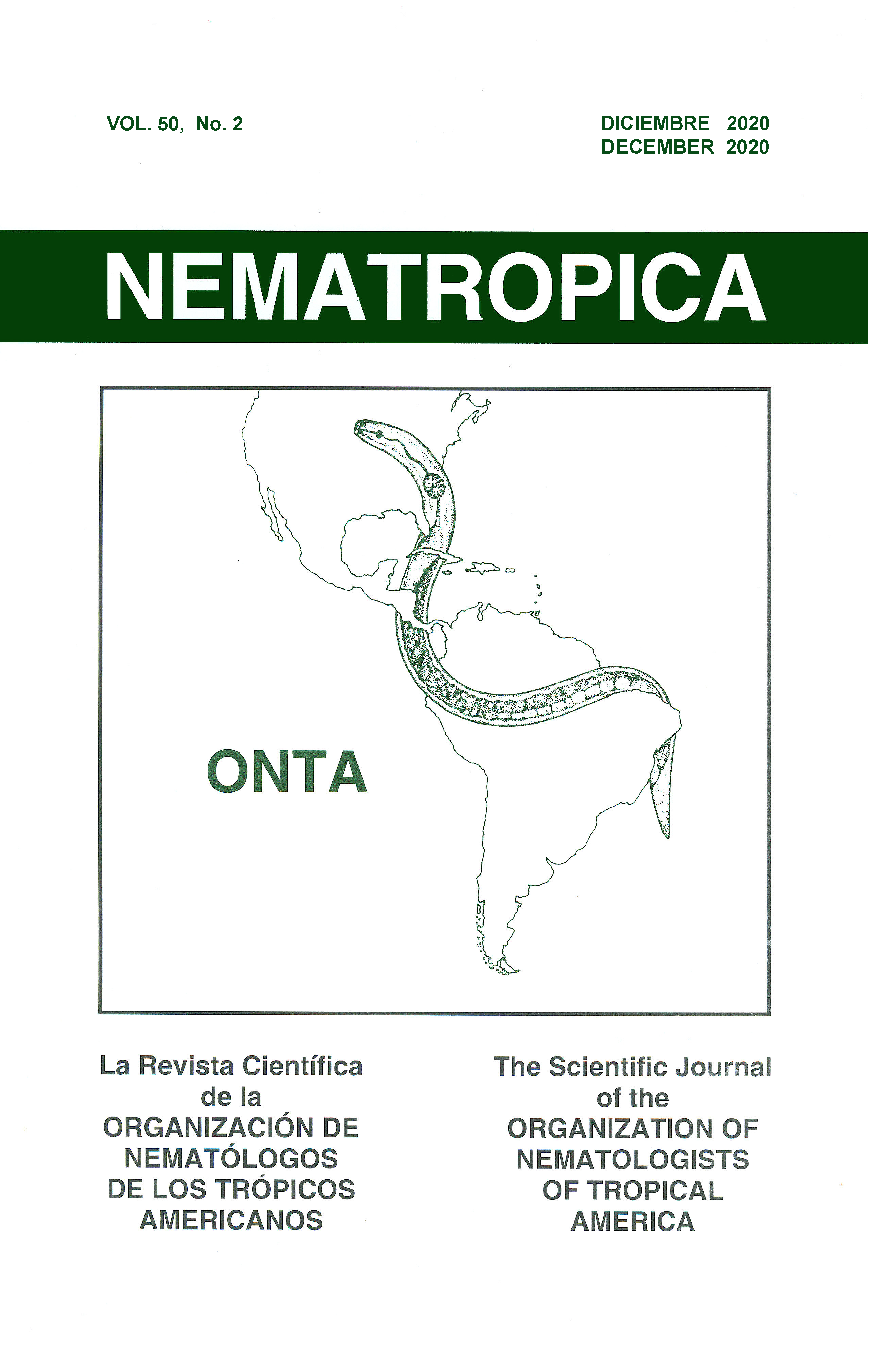EFFECTIVENESS OF PASTEURIA PENETRANS APPLIED TO SEED OR FURROW
Abstract
Pasteuria penetrans is a parasite of root-knot nematodes. Endospores of P. penetrans attach to the cuticle of second-stage juveniles (J2) and subsequently sterilize the infected female. Previously, we showed that prior exposure of Meloidogyne arenaria J2 to root exudates led to reduced attachment of P. penetrans spores suggesting that nematodes encountering spores within the root zone may be more resistant to spore attachment than are nematodes encountering spores outside the root zone. This study compared the effect of applying 3 x 105 P. penetrans spores in furrow versus with the seed at planting on egg production by M. arenaria in greenhouse pots. The results showed that P. penetrans spores applied by either method reduced nematode reproduction compared to the untreated control; however, in furrow application reduced egg production more than spores applied along with the seed (57.3% vs 35.6% reduction). Greater exposure of M. arenaria J2 to root exudates in the seed compared to the furrow application may explain the difference in application methods. Additionally, furrow application may distribute the spores over a greater area than seed applications, increasing the chances of M. arenaria J2 acquiring spores further from the roots which may impede their ability to infect the roots.

